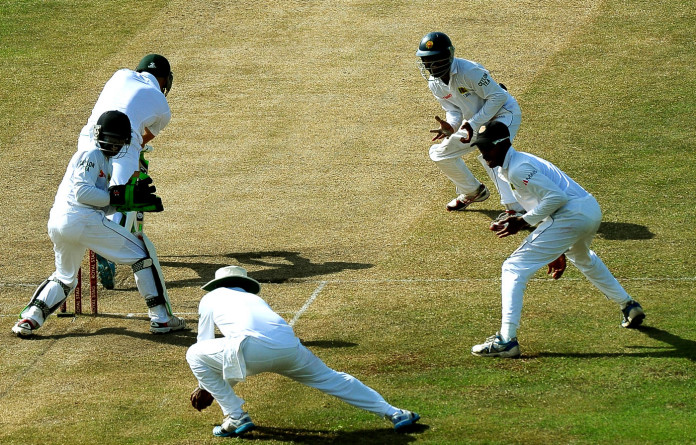As the Sri Lankan Team lost a few matches due to poor fielding in the recent past, I thought of discussing the aspects of fielding which would be helpful for aspiring young cricketers, if they are to play International Cricket.
Sanath Jayasuriya to continue as Chief Selector
Sri Lanka Cricket has decided to extend the contracts of the current selection committee headed by Sanath Jayasuriya…
Slip Fielding plays a big role in dismissing batsmen, especially with the new ball and if a few sharp chances are held at the beginning of the opposition’s Innings, it automatically puts pressure on the batting side. I observe that the present slip fielders have both palms resting on their knees, bringing them together only when the ball has been delivered. This to my mind compels a player to grab at a catch, which results in the ball striking the palms with a thud, increasing the chances of the catch being spilled.
When we played cricket, the slip fielders were taught to keep their hands together and focus their eyes on the edge of the bat as the bowler started his run up. So that when the batsman nicks the ball it was a matter of allowing the ball to come into the hands and pulling the ball into the body to break the force of the ball and take the catch. This is what is referred to as taking a catch with soft hands. The First Slip fielder may follow the ball from the bowler’s hand through to the bat, enabling him to take a catch when the batsman nicks. The catching fielders on the leg side are advised to focus on the outside of the front leg pad, as invariably the bat pad catch and the deflection could be spotted more easily by adopting this method.
Catches in the outfield are mainly of two types, namely the catches that are hit parallel to the ground and those that are hit high in the air. The parallel catches that come to a fielder from a little above the ground to waist high should be taken with cupped hands with the fingers pointing downwards and drawing the ball in to break the force of the ball. The ones that come at chest and head high should be taken with cupped hands with the fingers pointing upwards.
Hasaranga’s Dream Debut, recalling Uvais Karnain
With his side struggling in an arduous duel, Malcolm Waller was a lone fighteR..
The catches that are hit high in the air can be taken in two ways. One by taking the catch just below eye level and pulling the ball into the chest in order to break the force of the ball. The other method is to take the catch with reverse cupped hands with the ball being held just above eye level.
It is important when taking this type of catch to keep the palms on the side of the eyes so that the fielder can watch the ball coming into the palms. It has now become fashionable for fielders when taking a high catch to crouch or fall over whilst taking the catch. I have seen many catches being grassed due to this. The better way to take a high catch is to come under the flight of the ball as quickly as possible and stay balanced on one’s feet to make the catch look simple and effective. Bowlers too should deliver the ball and keep their eyes focused on the batsmen in anticipation of a return catch.
There is a tendency for fielders to collect the ball, roll over and get up to make a throw at the wickets. While this looks very good to the spectators and TV viewers, it is fraught with danger to the fielder if he falls heavily on his shoulders and injures himself. I would advocate diving and stopping the ball only when the fielder cannot collect it by running around it.
Read: Madushanka and Aponso dropped from ODI squad
Sliding and diving on the boundary line seems to be the norm these days and whilst it is spectacular and good for the cameras it could result in a player injuring himself due to a bad slide or a dive. Here again the dive and the slide should be resorted to only if a fielder cannot run round the ball and collect it while remaining on his feet.
As a person who has played competitive cricket, I feel for players who drop catches, as at times it could be due to the ball coming against a background of the colour of the ball, thus making it difficult for the player to pick up the flight of the ball. The ball coming against the sun and the powerful lights of the stadium towers can also momentarily blind a player’s vision resulting in a spilt catch.
Aspiring players are advised to take their fielding seriously and spend a lot of time practicing to be a good fielder, as it will be difficult for one to play representative cricket being a poor fielder.




















